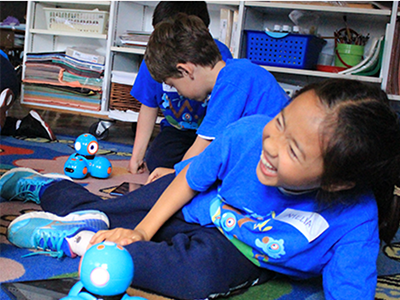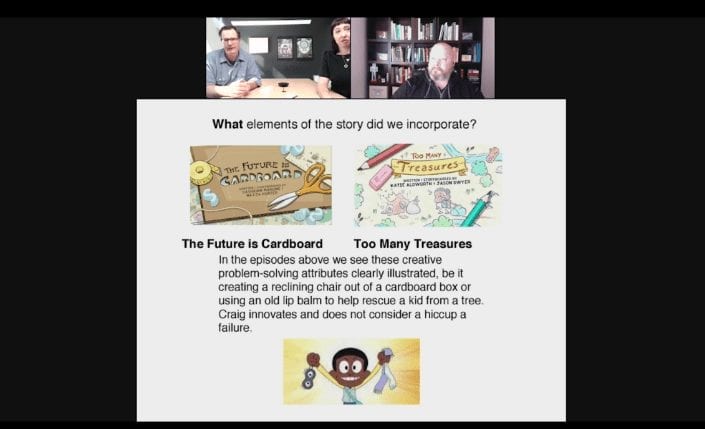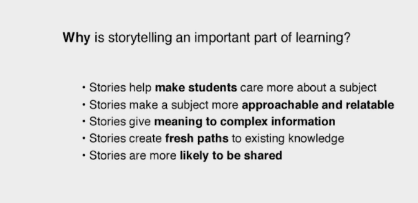How Humor and Storytelling Help Foster STEM Engagement
Storytelling can create educational environments where content is approachable and relatable, gives meaning to complex information, and creates new pathways to existing knowledge. According to the presenters of a recent edWebinar, Jenni Light, Senior Manager of Insights and Strategy for Cartoon Network, John Britt, Writer and Producer at Cartoon Network, Creative Group, and Chris Rettstatt, Product Manager at Wonder Workshop, STEM projects are designed to ensure that students have opportunities to learn problem-solving skills, engage in real-life experiments and analyze data. While these types of projects can be fun in their own right, adding a story and humor to the lesson increases overall student engagement.
Why do I need to learn this?
Creating educational environments where students have emotional connections and vested in the lesson can be attained when adding storytelling elements to STEM projects. One example is an anecdotal approach to teaching robot obstacle detection. Teachers can create a storytelling challenge about obstacle detection where students navigate a spaceship to avoid meteors and land on the alien planet. This storytelling pathway to a lesson creates a more reliable connection between the student and the subject.
Why don’t’ I understand?
Students can become guarded when learning a challenging topic such as robotics. According to the presenters, humor is a great way to get around those defenses. By programming humor into the personalities of the robots, students’ interactions with funny and quirky robots can reduce anxiety and increase creativity and engagement. Even integrating physical humor such as chaos and deliberate confusion in robotic and coding activities can be effective strategies for making STEM and STEAM projects less scary and less intimidating for students.
Humor and storytelling meets robotics
Whatever career students pursue once they leave the educational realm, skills that they learn through robotics and coding promote skills such as critical thinking, problem-solving, and computational thinking. One of the most effective strategies for developing these skills is by integrating humor and storytelling into STEM and STEAM projects. This energizing and creative approach to learning helps foster creative confidence, fuels self-expression, teaches students the fundamentals of collaboration, and celebrates curiosity. One example of a partnership that exposes students to projects that use humor and storytelling is between Wonder Workshop, a robotics company, and the entertainment and media company, Cartoon Network. They organized a low barrier entry to robotics and coding with a robotic competition that isolates and breaks down real-world problems into fun, manageable, and educational challenges.
Whether teaching a classroom-based STEM or STEAM activity or developing a robotics program in a district, humor and storytelling can create learning spaces that fuel creative confidence, self-expression, curiosity, and collaboration. The presenters encourage educators to challenge students to become inventors and creators of tomorrow.
This edWebinar was sponsored by Wonder Workshop.
This article was modified and published by EdScoop.
About the Presenters
Jenni Light began her career in toy design and became fascinated in the science and behavior behind play. After leaving toy design, she continued her post-graduate work in design-based ethnographic field research and began working with fortune 500 companies as well as educators to understand the overlapping spaces in learning, play, and technology. Since joining Cartoon Network, Jenni has had the opportunity to work and create in spaces encompassing entertainment, technology, and social-emotional learning while identifying new ways to bring humor and heart to our fans.
John Britt has been making video nonsense for nearly 20 years, ranging from chuckle-inducing commercials to mirth-inspiring music videos. Currently, his nonsense-making skills are utilized by Cartoon Network’s Creative Group, where he writes promos and short-form content for shows such as Craig of the Creek, Infinity Train, and Ben 10. In his spare time, he enjoys building lo-fi electronic musical devices created with Arduinos, Raspberry Pis, old-school integrated circuits, and plenty of fumbling guesswork.
Chris Rettstatt has been creating content and products for kids for 20+ years. A big fan of interactive content, Chris’ current focus is on creating play and learning experiences at the intersection of narrative, robotics, and the endless ingenuity of kids. Chris was recently Digital Editor at Highlights for Children, and he currently serves as Product Manager at Wonder Workshop, where he is developing missions for the Wonder League Robotics Competition.
Join the Community
Coding & Robotics K-8 is a free professional learning community on edWeb.net that supports teachers, administrators, and all educators to help students explore coding and robotics and develop math, logic, critical thinking and problem solving skills, and challenges them to think creatively.






Comments are closed.